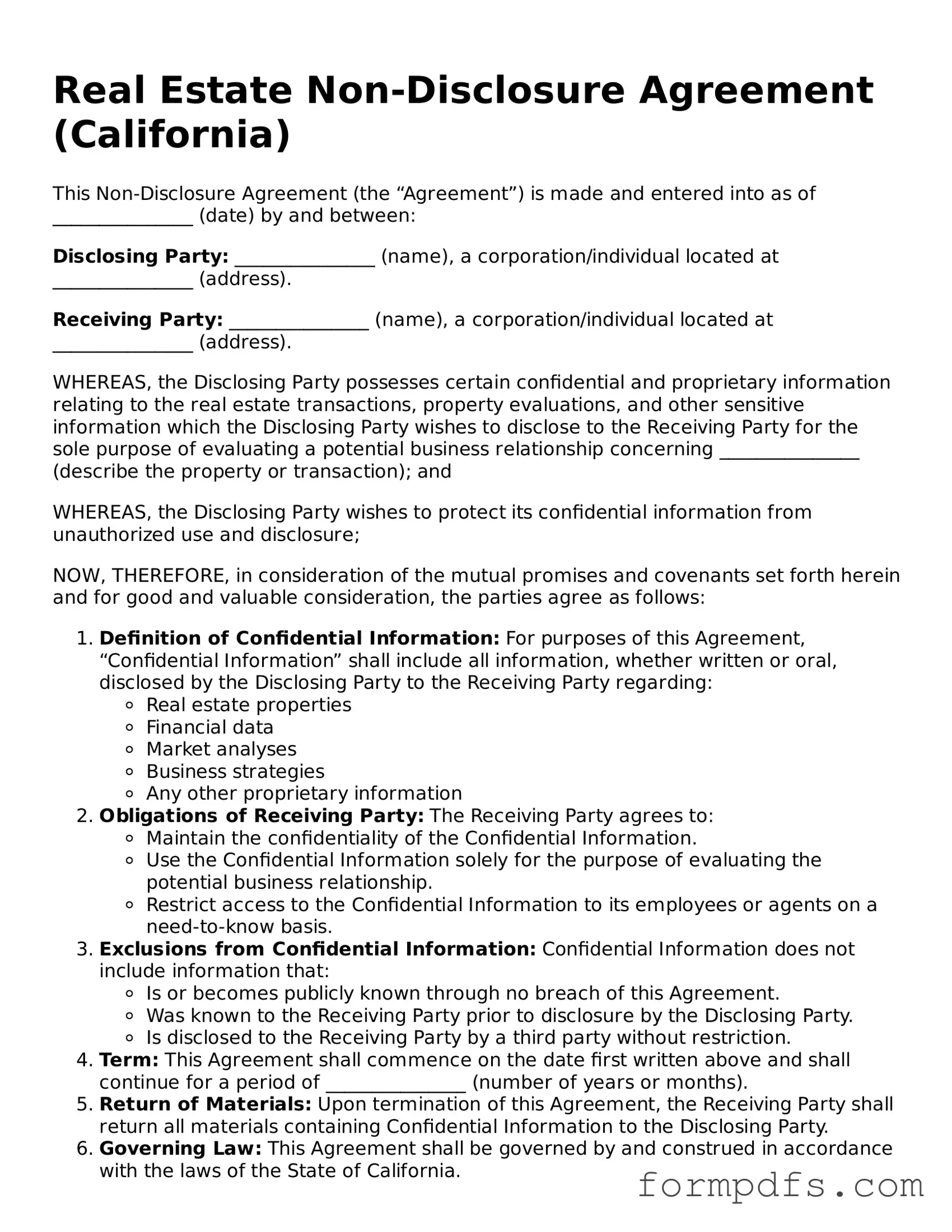What is a Real Estate Non-Disclosure Agreement (NDA)?
A Real Estate Non-Disclosure Agreement is a legal document that protects confidential information shared between parties involved in a real estate transaction. This agreement ensures that sensitive details, such as financial information, property specifics, and marketing strategies, remain private and are not disclosed to unauthorized individuals or entities.
Why should I use an NDA in a real estate transaction?
Using an NDA in a real estate transaction helps safeguard your interests. It builds trust between parties by ensuring that any sensitive information shared during negotiations is kept confidential. This can be particularly important when discussing pricing, terms, or any proprietary information that could give one party an unfair advantage if disclosed.
Who typically signs a Real Estate NDA?
Typically, both buyers and sellers, as well as real estate agents and brokers, may sign a Real Estate NDA. Anyone who has access to confidential information regarding the property or transaction should be included. This ensures that all parties are on the same page regarding confidentiality and the importance of protecting sensitive information.
What kind of information is covered by an NDA?
An NDA covers a wide range of information, including but not limited to financial records, property appraisals, marketing plans, and any proprietary information about the property or transaction. Essentially, any information that could be considered confidential or sensitive should be included in the NDA to ensure protection.
How long does the confidentiality obligation last?
The length of the confidentiality obligation can vary based on the terms set in the NDA. Generally, it lasts for a specified period, often ranging from one to five years. However, some agreements may state that certain types of information remain confidential indefinitely, especially if they pertain to trade secrets or proprietary business practices.
What happens if someone breaches the NDA?
If someone breaches the NDA, the affected party may seek legal remedies. This could include seeking damages for any losses incurred due to the breach. Depending on the severity of the breach, the injured party may also pursue injunctive relief, which is a court order to prevent further disclosure of the confidential information.
Can I modify the NDA to fit my needs?
Yes, you can modify the NDA to suit your specific needs. It’s essential to ensure that the terms reflect the unique aspects of your transaction and the type of information being shared. However, it’s a good idea to consult with a legal professional to ensure that any modifications remain enforceable and protect your interests adequately.
